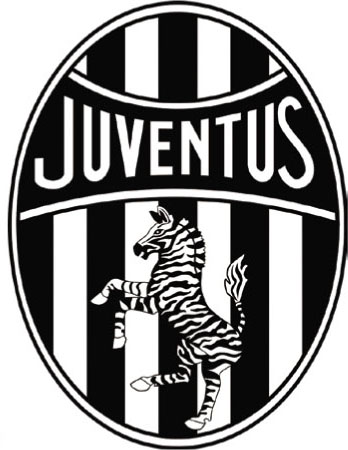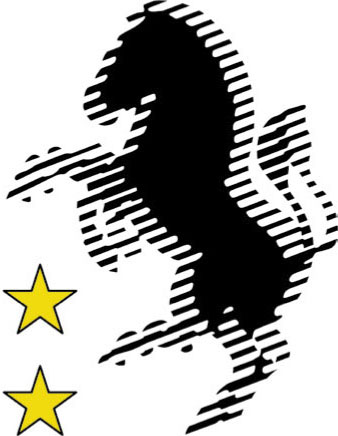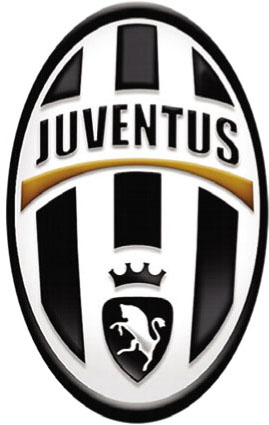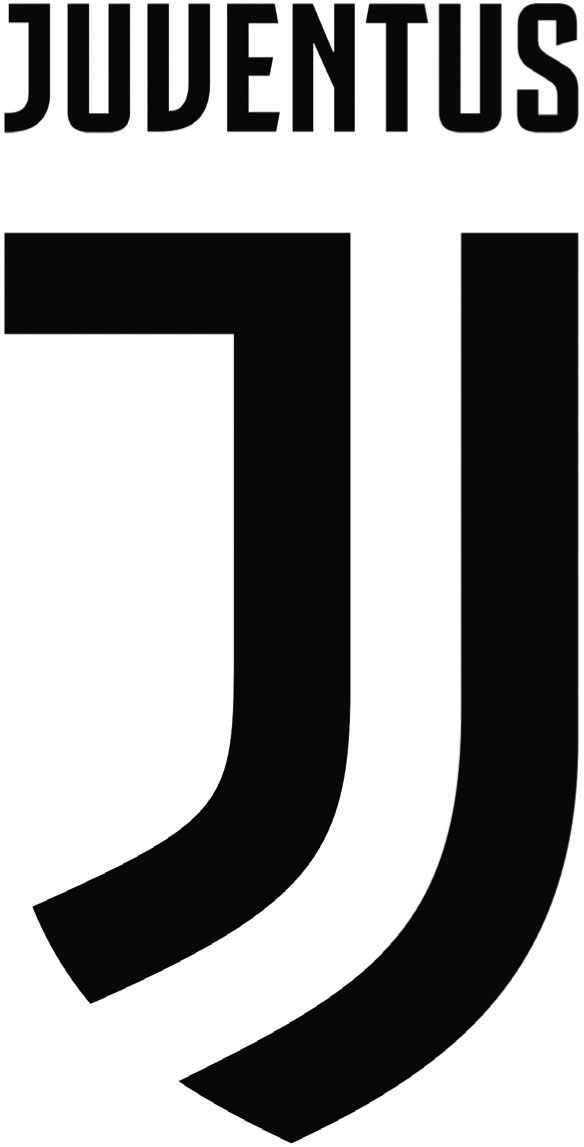
JUVENTUS
THE OLD LADY OF TURIN
Like a phoenix, Juventus rose out of the ashes of Calciopoli, the bribery scandal of 2006 that shook Italian football to its very foundations. Clubs such as Milan, Lazio, Fiorentina and Reggina were mixed up in it. Juventus as well. Italy’s biggest and most loved club was vilified, even hated. Juventus’s managing director Luciano Moggi was the spider in the criminal web and the club was punished with relegation to Serie B. Huge stars left the team double quick. By contrast, others stayed. Gianluigi Buffon, Pavel Nedved and Alessandro Del Piero chose to play on and help raise the ‘Old Lady’ back to the top flight, proof of the enduring attraction of the club.
Today, Juventus has reclaimed its throne. After the return to Serie A in 2007, the black and white Turin team showed that they were far from beaten by securing a third-place finish in the top flight. But it would take another four seasons before the club would again be crowned as League Champions, a 2012 title that was followed by several successive Scudetti (Serie A shields).
Juventus’s popularity doesn’t rest only on its success. Although the club was formed in 1897, the foundations for modern success were laid when Edoardo Agnelli, owner of the Fiat car company, bought the club in 1923. With the Agnelli family in charge, Juventus became Italy’s first professional club, and strong bonds developed between the team and the workers at the car factory Mirafiori, built in 1939. As many southern Italians migrated north to Turin to work in the car factory, so the club’s fame spread throughout the land. The esteem gained lives on and Juventus remains the best-supported club in the country. The black and white stripes of ‘Juve’ are recognisable globally.
The club’s stability was reflected in the fact that the club crest changed little for seven decades. The one radical exception was from 1929 to 1931, when the bull of Turin was replaced by a zebra to reflect the team’s nickname. The zebra returned for the 1980s before a revamp brought back the eliptical shape with the bull and the crown.
CLUB: Juventus FC
NICKNAMES: La Vecchia Signora (the Old Lady), La Fidanzata d’Italia (the girlfirend of Italy), I Bianconeri (the White and Blacks) and Le Zebre (the Zebras)
FOUNDED: 1897
STADIUM: Juventus Stadium, Turin (41,507 capacity)
HISTORIC PLAYERS: Giampiero Boniperti, Michel Platini and Zinedine Zidane

1905–1979. Juventus’s first emblem set the tone for future generations. Between 1905 and 1979 the club used several variations of the same logo. The crown and the rampant bull are taken from Turin’s city crest, in which the bull has been a feature since the 14th century. The blue colour also has historic significance because this, too, can be seen in the city crest.

1929–1931. For 70 years, with one exception, Turin’s bull was the main element in Juventus’s emblem. That exception came in 1929, at the suggestion of the journalist Carlo Bergoglio: in reference to the club’s nickname, Le Zebre (the Zebras), a zebra took the place of the bull. The number of stripes was also increased, from seven to nine. In the beginning Juventus played, like today’s Palermo, in pink and black, but in 1903 when the club needed a new kit, they ordered them from Notts County, where one member of the team, John Savage, had played.

1979–1990. The zebra returned at the end of the ’70s, and subsequently appeared in three different versions. The two stars were introduced in 1982, when Juventus won its 20th league title. Juventus was the first club in the world to use stars to symbolise the number of league titles, a practice they began in 1958.

1990–2004. When the emblem was modernised in 1990, it returned to its roots. The bull and the crown were back, but now they were golden to symbolise glory.

2004–2017. In 2004 Juventus employed the agency Interbrand to update the club crest. The result was in tune with the times: a highly stylised emblem, with the historic symbols toned down. Oddly the club name comes from the Latin word iuventus, meaning ‘youth’, which stands in stark contrast with the club’s nickname: La Vecchia Signora, or the ‘Old Lady’. The latter nickname originates from the early 1900s, when the supporters referred to the club as their ‘lady’.

2017–present. On 16 January, 2017, the Agnelli family shocked the whole world of football when they unveiled the new club crest. The bull and the crown were discarded and replaced with a stylised J. The logo met with a certain amount of scepticism. Supporters raged at not having been consulted and took to Twitter to say so. Criticism was also directed at the club’s declared intention to establish the emblem outside football. The crest was adopted in July 2017, and came in two versions (black on white, and white on black). Like its predecessor, it was designed by the agency Interbrand.

Alessandro del Piero in 1997 in Juventus’ famous black and white stripes. Serie A Scudetto winners are permitted to use the tricolore or ‘little shield’ as a club crest to mark the previous season’s championship win.